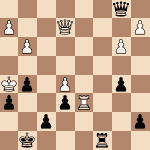This is a correspondence game I completed in April 2015. I don’t know the actual name of my opponent … just his username (Astronaut) and his rating (2146).
1.d4 f5 2.c4 Nf6 3.Nc3 g6 4.g3 Bg7 5.Bg2 0–0 6.Nf3 d6 7.0–0 Qe8 8.d5 a5 9.Nb5 Na6 10.Ng5
This knight wants to occupy e6, so let’s take a moment to assess the position. White has two aggressively posted knights. Remember these next two principles, because you will win a lot of games by thinking this way.
How to Keep the Initiative
• Create long-term threats that are hard for your opponent to eliminate.
• Create threats that lead to new advantages.
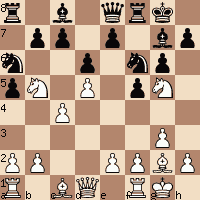
Neither knight is sustainable on its current square, and the time White has invested moving them around allows Black to strengthen his position, and gradually take over the game.
10...e5!
A temporary pawn sacrifice that completely disrupts White’s plans.
11.dxe6 h6 12.Nh3
White could have played 12.Nf7 and the knight looks powerful on this square. However, he ends up with a losing position, because the post on e6 will quickly go away, and after that, the knight will immediately leave the board.
12. Nf7 Kh7 13. Bd5 Bxe6 14. Bxb7 Qxf7 15. Bxa8 Rxa8 and Black is winning.
12...Qxe6 13.Qc2
13.Nf4 was the logical follow-up to White’s last move, and it leads to an interesting decision. Black now has the opportunity to play ...Qxc4, destroying the post holding the other knight.
Decisions that Completely Change the Game
Sometimes you’ll be looking at two different variations, and one of them will completely change the character of the position. Let’s say you could turn on the analysis engine, and it says that you have a .4 advantage (.5 = half a pawn).
You’re looking at two different moves, and you have an extremely important decision to make. The first choice will increase your advantage to .8 pawns (a full pawn is enough to force a win). The second choice doesn’t change the assessment at all.
However, the first choice involves making a radical change to the nature of the position (usually, but not always, this involves an important change to the pawn structure).
The second choice simply continues to improve your position. Not only that, you like your position, and you see a clear plan for continuing to build up your advantage.
In my opinion, after thirty years of tournament play, your practical results will be much better if you choose the move that maintains the natural flow of the game. It’s much easier, as opposed to “having to rethink the entire position.”
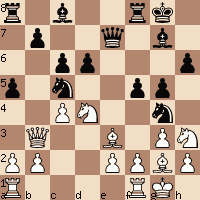
Here’s a variation from this contest with Astronaut, which “wins material,” but leaves me with no kingside play and several square and pawn weaknesses.
13...Qxc4 14.Nxg6 Qxb5 15.Nxf8 Bxf8
Create Positions You Like and Understand
My chess computer calls this a winning position for Black because I have two knights for a rook with equal pawns on the board. However, I don’t like this position, and wouldn’t enjoy playing it out from here, even if it is winning. There are a couple important reasons I feel this way:
- On the kingside, I have two isolated pawns and lots of square weaknesses. In other words, my kingside play is dead. Not only that, it feels like there’s a good chance I could end up suffering on that side of the board.
- Of equal importance, there’s no clear outpost for my knights. I can play the king knight to
e4, but that will allowQh5after White playse3. The knight can also be forced to evacuate afterf3.
Bottom line … I don’t like the position
Manage your Mind at the Board
Let’s add one important point. Remember I said that “I wouldn’t enjoy playing that position.” However, if the game did go in that direction, I would absolutely use all my will to summon up total enthusiasm for the task at hand.
That means I would joyfully embrace the technique of converting the advantage into a win even if the position was “dry and technical,” a “real long grind, finish at midnight” kind of game, or whatever else I didn’t like about the position.
Questions are the Answer
After that, I would ask a series of highly focused questions. They would be designed to help me find clarity about the recent changes, establish priorities, and create a new plan. You will improve your skill greatly as you learn to ask quality questions that help you sort out the position on the board.
Questions are a vital assessment tool, and we will devote an entire article in the future to that subject, and this will definitely help you sharpen that skill.
Three Powerful Weapons
We just talked about three of your greatest weapons in your Journey to Mastery. These qualities are a huge part of The Winning Formula in Chess.
- Be enthusiastic.
- Be mentally tough.
- Ask quality questions
Returning to the game, after Nf4 I would have played ...Qf7.
This is a very natural square for the queen. After this move, “according to the computer,” my advantage would have been less, but I would have felt much more comfortable playing the position.
That’s what matters most.
13...g5
The knight won’t get another chance to return to the center of the board.
14.Be3 c6 15.Nd4 Qe5 16.Nf3 Qe7
Let’s assess the position.
Right now White wants to play Bd4 in order to challenge the long diagonal. He would also like to pressure my backward d pawn with Rd1.
But he doesn’t have time for either plan.
Both of White’s knights have been chased from their forward posts, and Black has an immediate threat to play ...g4, which wins a piece. This means that White has to either sacrifice a piece on g5 … or invest more time into another knight move.
17.Nd4 Ng4 18.Qb3 Nc5
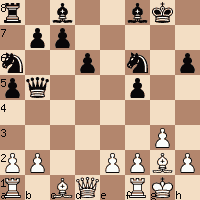
19.Qa3 Bd7 20.Nc2 Nxe3 21.fxe3
The alternatives are equally bad.
21.Qxe3 Qxe3 22.Nxe3 f4.
And now White can’t capture the pawn on f4, because Black would continue 25…g4, winning the knight. So the contest would continue 23.Nc2 Bxb2 winning a pawn and the game.
21.Nxe3 is losing after 21...f4 22.Nc2 Qxe2
21...Qe6
White can’t hold the c pawn.
22.Rac1 Qxc4 23.Nd4 Qb4 24.Rcd1 Rae8 25.Nc2 Qxa3 26.Nxa3 d5 27.b3 Rxe3 28.Rf2 Ne4 29.Bxe4 fxe4 30.Rxf8+ Bxf8
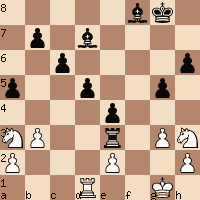
Notice how Black’s bishops are completely dominating White’s knights. And what’s the reason for this? The knights don’t have posts!
31.Nc4 Rc3 32.Nf2 Rc2 33.Nxe4 Bh3 34.Nf2 Bc5 35.e3 dxc4
Even better was ...Bf5 emphasizing the great square control of the two bishops. White’s knight would have been forced to move then I would have captured on e3 and the game would have ended soon after that.
36.Nxh3 Bxe3+ 37.Kh1 Rxa2 38.bxc4 a4 39.Rd8+ Kf7 40.Rd7+ Kf6 41.Rxb7 g4 controlling f3, which sets up a mating net.
42.Nf4 Ra1+ 43.Kg2 Rg1 mate.
